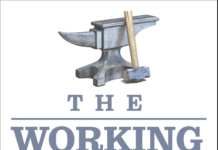
Announce protest actions, general chit chat or give your opinion on issues we haven’t covered for the day.
Moderation rules are more lenient for this section, but try and play nicely.
EDITORS NOTE: – By the way, here’s a list of shit that will get your comment dumped. Sexist language, homophobic language, racist language, anti-muslim hate, transphobic language, Chemtrails, 9/11 truthers, climate deniers, anti-fluoride fanatics, anti-vaxxer lunatics and ANYONE that links to fucking infowar.






This public community letter is for the attention of the Coalition Labour government of 2017-2020 and refers to promised solutions for rail transport for our future “benefit” according to Government historical records.
http://www.kiwirail.co.nz/about-us/history-of-kiwirail/150yearsofrail/stories/road-transport-regulation.html
Protecting our environment & health.
In association with other Community Groups, NHTCF and all Government Agencies since 2001.
Public COMMUNITY letter; : 6th Anniversary of Gisborne rail washout 24th March 2012.
24th March 2018; – On this day the sixth anniversary of the rail washout that closed Gisborne rail link to the rest of NZ.
Dear MP’s – and public rail stakeholders,
Please review these past considerations of NZ Rail for your re-consideration to re-open the Gisborne rail link to the rest of NZ.
We should curtail trucking as now it is harming the environment and use * General Manager of NZ Rail Trevor Haywood’s plan to use rail for “social benefit” again. 1971.
Read below, History of rail.
In 1971, the Government commissioned United States consultancy firm Wilbur Smith & Associates to look at Railways. It also recommended that road transport meet the “resource costs” incurred and social costs such as accidents, pollution and the loss of utility caused by heavy vehicles.
We must use these considerations also when restoring Gisborne’s rail freight again.
Our justification is;
As we say it is justified that rail services must resume, because “Gisborne is the most isolated community of its size in NZ without a rail service”; – ministers please note below what former NZ Government agreed to place our rail as a “social benefit for our citizens and not just a profit mechanism but an essential public service”
Secretary.
Citizens Environmental Advocacy Centre.
http://www.kiwirail.co.nz/about-us/history-of-kiwirail/150yearsofrail/stories/road-transport-regulation.html
Kiwirail media document “History of rail” 150 yrs of rail in NZ.”
• Emergencies 0800 808 400
About us › History of rail › 150 Years of NZ Rail › Stories › Road Transport Regulation
Road transport regulation a controversial measure to protect railways
Preventing trucks from competing with railways, introduced in the 1930s, are interpreted today as a means of protecting the New Zealand Government’s investment in railways.
The United-Reform Government introduced a form of licensing in 1931. It was extended in 1936 by a Labour Government to include restrictions on how far trucks could travel in competition with railways.
But as the western world grappled with the impact of the Great Depression, politicians of the time – in New Zealand and in other countries – were concerned to avoid a costly duplication of transport infrastructure.
Railways had been the great nation-builder in many developed countries. In New Zealand, rail passenger journeys reached a peace-time peak between 1921 and 1924.
World War I had greatly improved motor vehicles. Trucks were making inroads on freight movement – particularly in New Zealand because of its comparatively low traffic volumes and scattered population.
Rail freight revenue, which had been steadily increasing up to 1929–30, started to decline.
New Zealand History Online records that between 1925 and 1930 the number of private motor cars more than doubled, from 71,000 to 155,000. With one car for every nine people, New Zealand had one of the highest car-ownership rates in the world.
The situation was the same around the world. Politicians scratched their heads and wondered what to do. Many of them – New Zealand included – opted for commissions of enquiry.
In December 1927 the President of the Wellington Chamber of Commerce, Charles Bowden wrote in the New Zealand Railways magazine, “It must be apparent to all that the problem of co-ordination or competition of rail and road services is one of the most difficult problems of our day.
“I consider the cost of distribution in New Zealand to be probably the highest factor in our cost of living budget; certainly it is one of the most important. The length and configuration of the country are admittedly a contributory cause, but the fact remains and is worth inquiry.”
Coincidentally, the Prime Minister of the day, Gordon Coates, announced a commission of enquiry on the day the magazine was published.
“It seems plain that enormous development may be expected in the use of commercial motor vehicles,” he said. “It is felt by the committee that the proper time to institute the investigation of this branch of the subject is while motor traffic is still in its infancy.” Coates promised “no drastic steps”, but he did deliver an indication of what was to follow. “There may be needless duplication and overlapping of roads and railway all eventuating in huge cost while insufficient figures are available to decide whether or not a road would economically serve all requirements and save the taxpayer the cost of a railway line and its operation,” he said.
The result was a form of regional transport licensing and freight concessions to encourage use of rail. Then, in 1936, the Labour Transport Minister Bob Semple introduced legislation which preventing trucks from carrying loads more than 30 miles (48km) and restricting new trucking operators to those that could prove a need for their services.
Restrictions weren’t confined just to freight. Bus companies also had to be licensed, and their vehicles, timetables and fares approved, by the Government.
Subsequently, the Railways Department expanded its Road Services Branch into one of the country’s largest bus operators. Road transport could still carry passengers and goods over and above the legal restrictions, but to do so, they had to gain approval from quasi-magisterial Transport Licensing Authorities.
As the century advanced, restrictions were gradually relaxed. The trucking restriction was extended to 40 miles in 1961 and again to 150 kilometres in 1977.
It was a time when the economic prosperity of the post-war period was beginning to recede. Britain’s determination to join the European union and lower wool prices threatened a dark cloud over the good times the country had enjoyed. By 1967 the export price for wool had fallen 30 percent, pushing up unemployment and inflation.
In 1969 a National Development Conference was convened which in turn created a number of sector committees. The Transport Committee recommended an examination of transport modes carrying traffic best suited to them without any regulatory intervention. In 1971, the Government commissioned United States consultancy firm Wilbur Smith & Associates to look at Railways.
Wilbur Smith said something like $40 million a year could be saved with better coordination of transport and it recommended the de-licensing of the road transport industry – with some safeguards in the form of a fee to be paid by road transport operators moving goods more than 64 kilometres.
The consultants considered that transport efficiency and the quality of service were more important than the financial welfare of Government-owned businesses. However, they also considered that Railways should receive compensation for providing socially desirable services that could not operate commercially.
“This study recommends that shippers be given maximum choice between modes, and that, to as great an extent as possible, an efficient allocation of traffic should be effected through pricing,” they said.
“This will involve setting rail rates according to rail’s marginal resource costs and taxing road traffic which is competitive with rail to recover the marginal resource costs of road transport, including social costs.”
Wilbur Smith noted that rail was most suited to long-distance and bulk commodity transport and recommended it be protected against a sudden reduction in traffic.
It also recommended that road transport meet the “resource costs” incurred and social costs such as accidents, pollution and the loss of utility caused by heavy vehicles.
Railways countered by saying the system proposed by Wilbur Smith would lead to wasteful duplication of services and result in an expansion of road transport at the expense of rail.
In the intervening months, Labour had won the 1972 election and inherited the Wilbur Smith report. It’s response was an October 1974 Green Paper, A new Direction for New Zealand Transport.
The Green Paper was largely sympathetic to the Wilbur Smith view of what needed to change. It endorsed the principle that users should be able to choose their transport mode and recommended the formation of a Railways Corporation.
But Labour had also inherited a freeze on freight charges and passenger fares, imposed in 1971. In the mid-1970s, annual deficits began to increase.
At the same time, freight being carried was expanding beyond railways capacity. Operation ‘Freightroll’ was a joint venture between the Railways and the Road Transport Association which chartered road transport operators regionally to help rail on line-haul work.
In 1975, the Government changed again. The National Party also endorsed the view that people moving goods should have the choice of the most efficient and economic mode.
The 1977 abolition of the old 40-mile limit, allowing road transport to compete with rail over a new limit of 150 kilometres, created competition on key routes like Auckland-Hamilton, Hamilton-Tauranga, Wellington-Palmerston North and Christchurch-Ashburton. The Railways response was to highlight it’s “rock and a hard place” position.
*The General Manager of the time, Trevor Hayward, released the first of a series of booklets entitled Time for Change which took the Railways case to the public.
But rather than arguing against road transport deregulation, he explained the challenge Railways faced providing loss-making public services.
He foresaw a future for Railways based on expanding commercial services, *continuing services that provided a social benefit – but in a transparent fashion and cutting those services that couldn’t be justified.
In December 1980 Railway Minister Colin McLachlan seemed to be “singing from the same hymn sheet”. He issued a media release indicating that Railway Corporation would be formed and Government would retain the 150 km limit as the basis for competition between road and rail.
“Fuel use alone dictates that the longer-haul freight should be carried by rail. At the same time, the cost of road upkeep continues to climb so that the present level of road user charges is not sufficient to maintain the standard required”.
But pressure to deregulate was mounting. An example was food company Watties which wanted to use road transport rather than rail to get their canned goods to the Auckland market.
The company claimed only half the goods sent by rail from Hawke’s Bay reached Auckland within the desired two-day period. The Transport Licensing Authority refused an application to use road transport. Watties and transport company Freightways went to court and won.
In 1982, the Ministry of Transport released a discussion paper which mooted deregulation of the transport industry, reducing freight costs by $37 million a year.
Trevor Hayward, suggested the paper should: “go the way of all the Secretary of Transport’s previous papers on the subject – into the wastepaper basket”.
But Railways objections were dismissed and the road transport distance restriction was abolished completely in 1983. The impact gradually became apparent. Trucks had carried almost 50 percent of land transport freight in 1972. By 1993, this had risen to 81 percent.
The international consultancy firm, Booze Allen Hamilton, subsequently engaged by Railways to make recommendations on improving the business’s efficiency, estimated deregulation would cost rail 15 percent of rail volumes and up to 25 percent of revenue.
The estimates of volume loss were subsequently proved to be accurate but revenue loss was less dramatic. Deregulation was however to lead to dramatic change in the staffing, organisation and in the fullness of time, ownership of Railways.
Sources: New Zealand Railways, the First 125 Years, David Leitch and Bob Stott, 1988; New Zealand History Online. New Zealand Railways Magazine, Electronic Text Collection
‘Zuckerberg Scrambles To Calm Facebook Employees’
https://www.zerohedge.com/news/2018-03-24/zuckerberg-scrambles-calm-facebook-employees
Julian Assange:
“What to see what Facebook has on you (at a minimum)?
1. Goto https://facebook.com/settings
2. Click “Download a copy of your Facebook data”
3. Wait for automatic email from Facebook
4. Download the ZIP file link in the email
5. Extract it and open ‘html/index.htm’
8:30 PM – Mar 24, 2018″
Zuckerberg = caught red handed.
It’d be pretty tough coming up with a more straight forward, cost effective scheme that targets swing voters.
Zuckerberg did actually monetise everyone’s useless attempts to tell every one they’d asked permission to poo in there diapers while crossing the road.
So we’ve got micro targeted ads. Next would be micro transactions so every gets a cut of the big data revenue. That’s why no one says anything about big data because they are trading in private information, and would have to cut every one in.
Comments are closed.